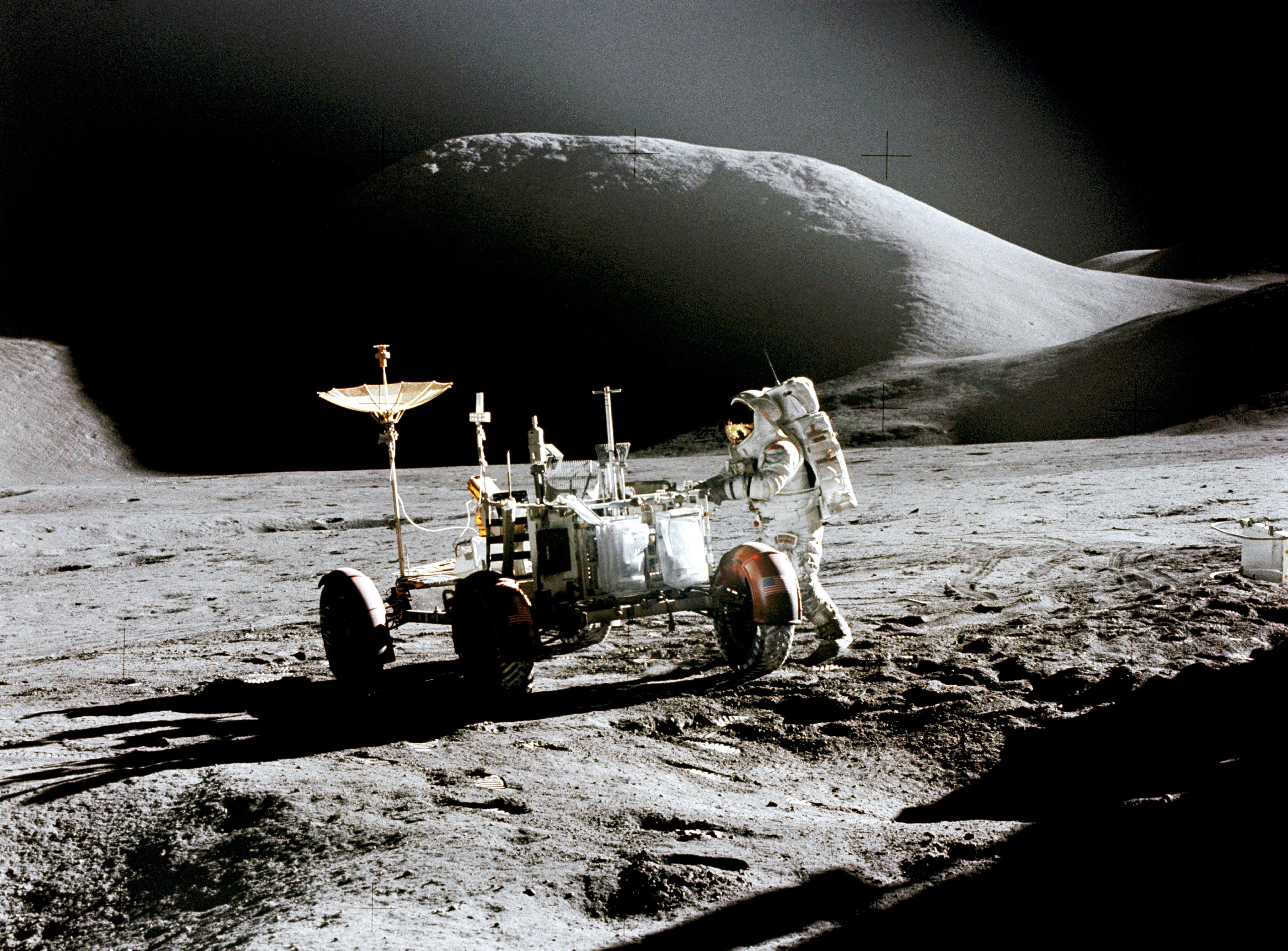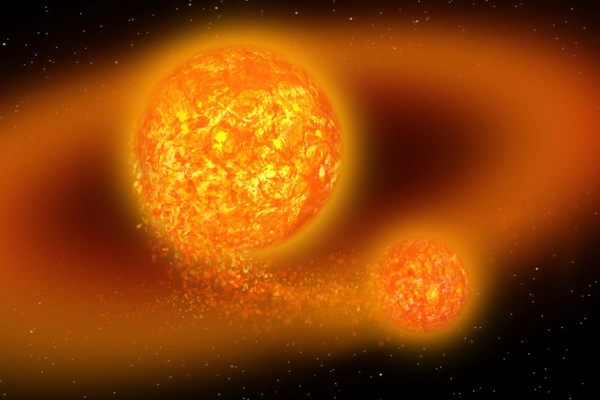Found: Evidence the Moon Had an Atmosphere for 70 Million Years
It would have been at its thickest about 3.5 billon years ago.

Four billion years ago, the Moon was going through a rough patch. During this age, now known as the Late Heavy Bombardment, the Moon (along with Earth) was being pummeled by asteroids. This had the effect of aggravating its core of liquid hot magma, the way a wound gets aggravated if you poke it one too many times. Lava exploded onto the Moon’s surface, leaving behind dark spots of volcanic basalt, cupped in the impact craters left behind by the asteroids.
Now, analyzing samples of the basalt collected in the 1970s, two space researchers have discovered that those eruptions also released a whole bunch of gas—so much that it formed an atmosphere around the Moon that lasted for 70 million years.
Looking at the composition of the basalt, Debra H. Needham, of the NASA Marshall Space Flight Center, and Dr. David A. Kring, of the Universities Space Research Association, were able to determine that those lava flows would have released carbon monoxide, oxygen, hydrogen, sulfur, and other gases from the Moon’s surface. Though much of that gas would have been lost to space, some of it formed a temporary atmosphere around the Moon. That layer of gas was about 1.5 times the thickness of the atmosphere on Mars, but still only about 1.5 percent of the Earth’s atmosphere, as Popular Mechanics reports.
The Moon’s temporary atmosphere would have been thickest about 3.5 billon years ago and lasted for about 70 million years. If lunar atmosphere isn’t exciting enough on its own, consider that the same events that led to its formation may have left behind materials that could further human exploration and life on the Moon—as NASA puts it, these compounds “may also provide the in-situ resources needed for sustained lunar surface activities.”
If humans find a way to spend long stretches on the Moon, we may have four-billion-year-old asteroids to thank.



















Follow us on Twitter to get the latest on the world's hidden wonders.
Like us on Facebook to get the latest on the world's hidden wonders.
Follow us on Twitter Like us on Facebook